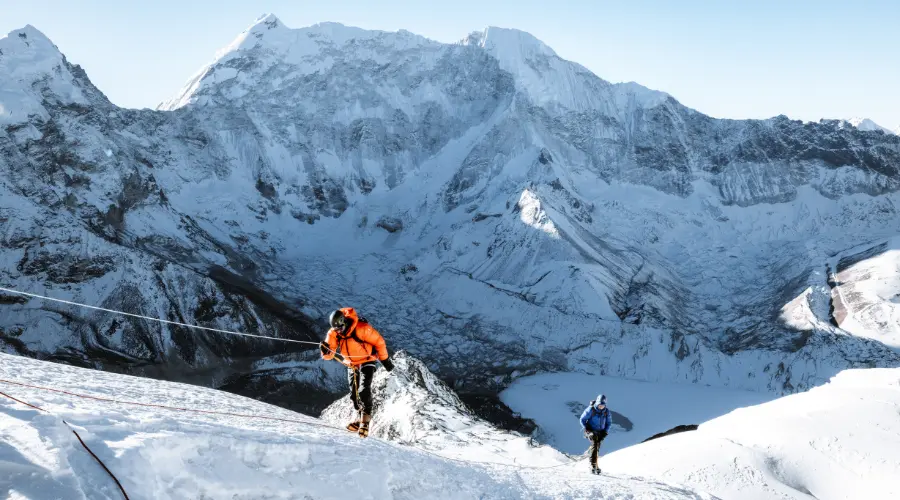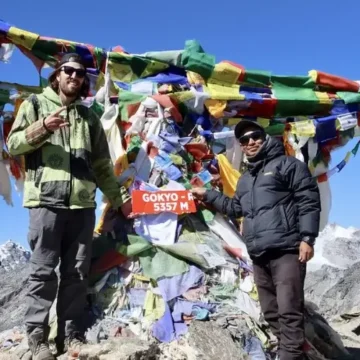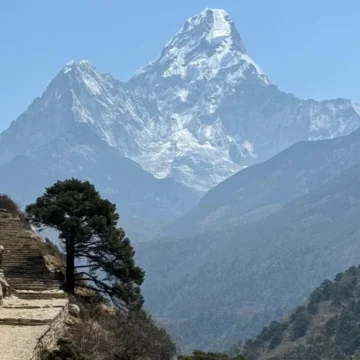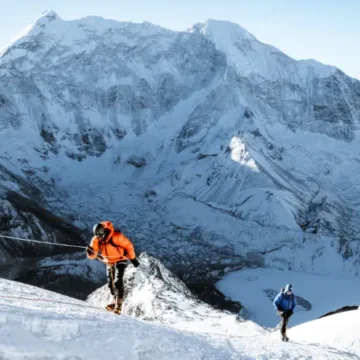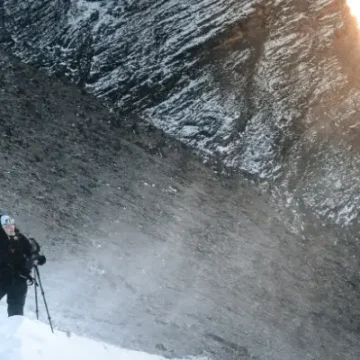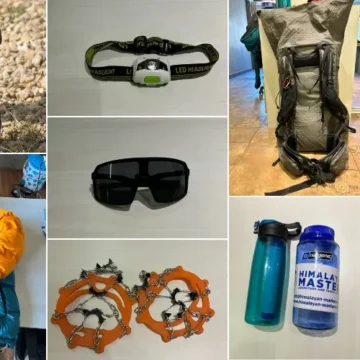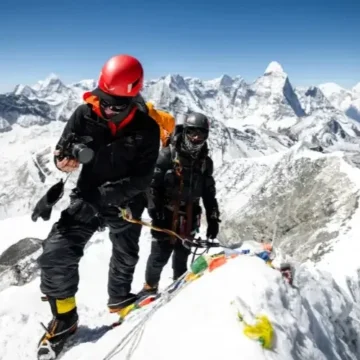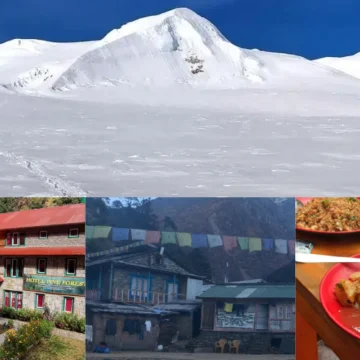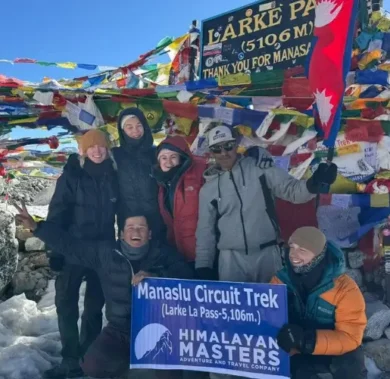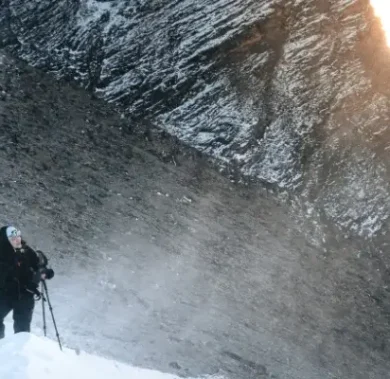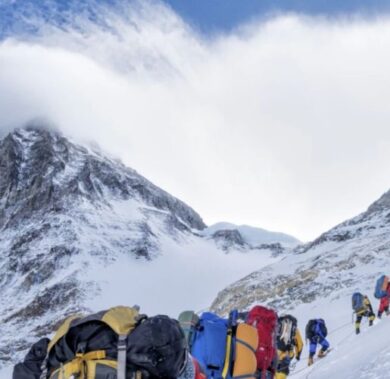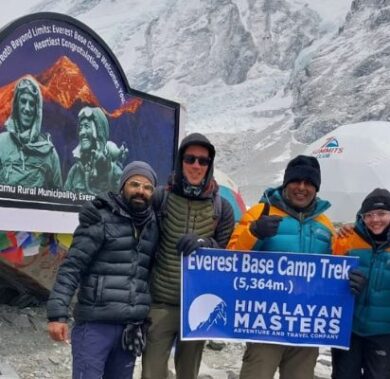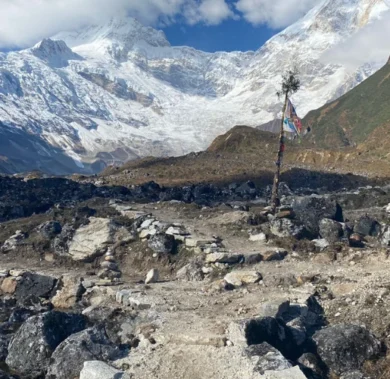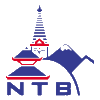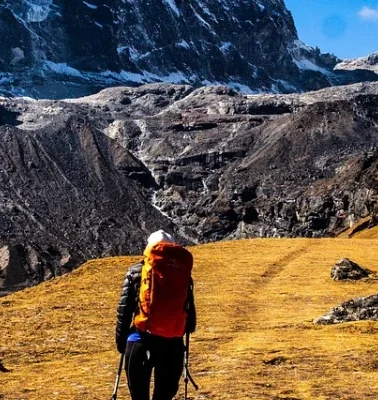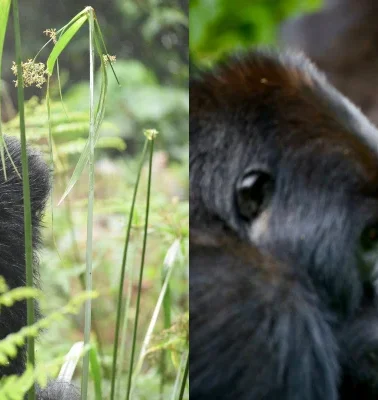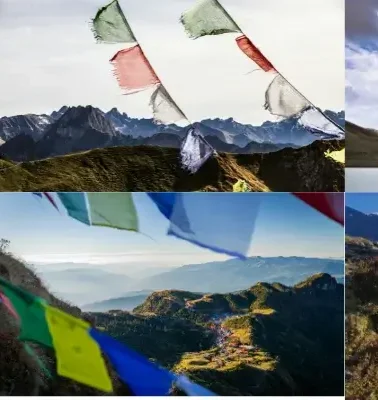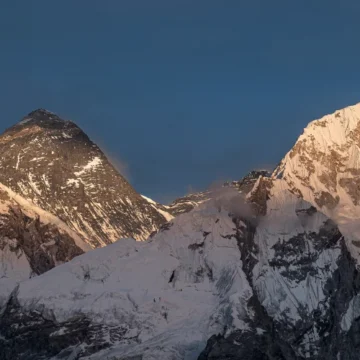
How to Prepare and Train for Island Peak Climbing?
Table of Contents
Imagine being atop one of the high-altitude peaks in the Himalayas and surrounded by endless snow-capped pinnacles. Island Peak (6189 m/20,305 ft), also known as Imja Tse, is one such majestic peak in the Everest region. However, getting there is not child’s play; it demands trekkers’ dedication and perfect Island Peak climbing preparation.
Trekkers are often confused about where to start preparing and training for Island Peak climbing. First and foremost thing to is collecting information about any trip your are planning for. If you want complete, updated, and quick information about Island Peak climbing, you can contact a professional, reputed trek and expedition operator like Himalayan Masters. You can contact us by email at [email protected], WhatsApp, or phone.
Whether you are an experienced, seasoned climber or a novice, first-time climber, climbing Island Peak offers breathtaking views of the Himalayan giants, including the world’s tallest mountain-Mount Everest (8848.86 m/29,032 ft). Besides Mount Everest, trekkers can get a glimpse of Lhotse, Nuptse, Ama Dablam, etc., and their surrounding peaks.
Additionally, while on the trek route, trekkers are blessed with cultural immersion, getting a chance to experience the mountain and Tibetan lifestyle.
Island Peak is not a trekking peak. It requires decent physical strength and some technical mountaineering skills. So, let’s begin with a walkthrough of everything that you need to know related to Island Peak climbing preparation to conquer this peak safely and successfully.
Things to Know Before Climbing Island Peak
Climbing Island Peak is one of the most thrilling activities in the Khumbu region. However, it comes with many challenges. It requires technical climbing skills, physical and mental fitness, proper preparation and climbing gear.
Some of the things you need to know before climbing Island Peak are mentioned below.
Climbing Difficulty
The Alpine Grading System grades Island Peak as a ‘2B Peak’ in climbing difficulty, which includes some technical sections. Therefore, trekkers need to be prepared accordingly.
Altitude Complexities
It is a high-altitude expedition, reaching a maximum elevation of 6189 meters. Getting altitude sickness is a common risk at such altitudes, and proper acclimatization is crucial to avoid this.
Physical and Mental Fitness
This is a demanding journey for which trekkers need good physical and mental fitness. For those who are suffering from lung disease like asthma or are pregnant, it could be riskier. Additionally, we do not recommend this trip for those who are not physically and mentally fit.
Weather
The weather on the Island Peak is unpredictable. So, be updated on the current weather conditions.
Season
The best climbing seasons are spring (March to May) and autumn (September to November). During these seasons, the weather is clear and stable, providing favourable conditions for trekking and climbing.
Climbing Route
Until Chhukung, the Island Peak climbing route follows the classic, rugged Everest Base Camp Trek route. Likewise, the route includes some steep sections, glacier crossings, and a final climb using fixed ropes.
Rescues Services
In case of emergencies, helicopter rescues are available. However, sometimes, helicopter flights might not be operable due to extreme weather. So, your ‘Sherpa’ will need to carry you down at that time.
Training Institutes
In Nepal, training institutes like Nepal Mountain Academy (NMA, Kathmandu) and Manang Mountaineering School (Manang) are known for providing mountaineering training. You can also get training in your own country.
Permits
If you are planning to climb Island Peak, you will need a Sagarmatha National Park Permit, a Khumbu Pasang Lhamu Rural Municipality Permit, and an Island Peak Climbing Permit.
Others
Apart from the above things to consider for the Island Peak Climbing preparation, you need to buy/rent high-quality climbing gear and some training.
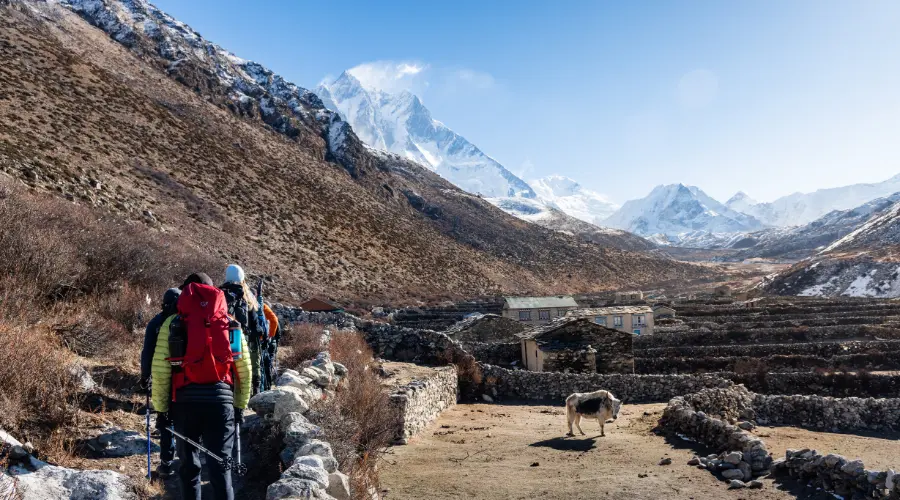
How to Prepare for Island Peak Climbing
Even before starting the journey, proper preparation is crucial in determining the success of your journey. From the beginning of the journey, from planning and preparation to starting the journey, the right Island Peak climbing preparation ensures a successful and memorable journey.
So, here are some of the preparations that you need to do before and during climbing Island Peak.
Physical Preparation
Island Peak climbing is a demanding activity requiring a high level of physical fitness.
Before reaching the Island Peak Base Camp, trekkers need to trek for 5-6 hours each day on the rugged terrain of the Everest region. They need to walk for 6-7 days, following the classic Everest Base Camp route to Chhukung and to the Base Camp of Island Peak.
If you are not physically fit, you might not be able to complete the expedition. For that reason, we recommend you do some cardiovascular and leg exercises at least 3 months before the trip.
Do some core-building exercises like running, cycling, swimming, stair climbing, planks, and some short hikes. Further, you can do a few exercises for the legs, back, and shoulders, like lunges, deadlifts, pull-ups, etc.
Mental Preparation
When on an adventurous journey like this, being physically strong is not enough; trekkers should also be mentally prepared. Anything could come up anything, especially on the high mountains. You need to be prepared to improvise if needed.
If not directly, having positive thoughts can make your journey enjoyable. It can also help you in managing fatigue, discomfort, and unexpected challenges.
Likewise, visualizing successfully summiting Island Peak will build your confidence and make you mentally prepared for what lies ahead. However, do not over-imagine; set achievable goals.
Technical Skills
Island Peak climbing is considered hard at a difficult level but is a beginner-friendly climb. As mentioned before, Island Peak is graded as a ‘2B Peak’, for which trekkers require some level of technical mountain climbing skills.
The ascent includes some steep sections, ladder crossings, glacier crossings, and a final climb using fixed ropes. Especially the final climb is the most challenging part of climbing. In addition to that, descending down the headwall is also equally challenging.
Therefore, if you are a first-time climber, it is compulsory to have some basic climbing training, knowledge of using mountaineering gears, and listen to your mountaineering guide.
It is crucial that you know how to use crampons, ice axes, harnesses, etc.
Although the Island Peak is considered hard, with proper preparation and guidance, climbing this peak is still achievable.
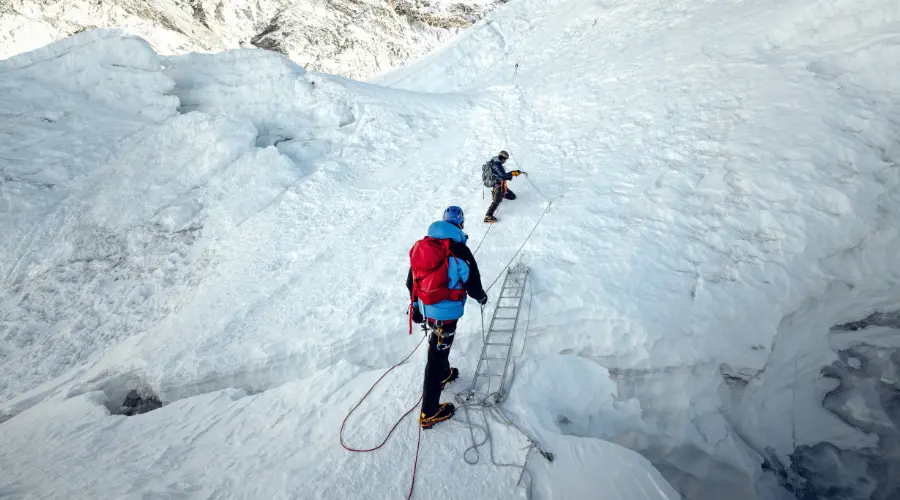
Gear and Equipment
Having the right gear for your Island Peak trip is essential to ensure your safety and comfort. Overpacking or underpacking can increase the difficulty of your trip. So, remember to pack according to the duration of your trip and the season you are travelling.
Some of the basic, essential gear and equipment are mentioned below:
Clothing: Thermal inner layer, insulating mid layer, water and windproof outer layer of clothing, down jacket, thermal gloves, warm cap, etc.
Footwear: Sturdy, comfortable, and waterproof hiking boots with good ankle support and compatible with crampons, thick and warm socks, slippers or normal sports shoes to wear in teahouses, etc.
Climbing Gears: Crampons, ice axes, harnesses, carabiners, ascenders, climbing helmets and boots, prusik loop, etc.
Backpack: A 40-50 litre backpack to carry gear and a small daypack to keep go-to items while trekking
Miscellaneous: Sunglasses, lip balm, sunscreen, headlamp, sleeping bag, first aid kit, neck gaiters, trekking poles, water bottle, extra battery or power bank, etc.
Acclimatization and Health
The Island Peak reaches a significant elevation of 6189 meters, which poses several high-altitude risks. One of the most common risks is the altitude sickness.
Usually, the first symptoms of altitude sickness can be felt above 2500 meters (8202 ft) altitude. To overcome this risk, most itineraries include acclimatization days, and they are designed so that our bodies can get accustomed to the increasing elevation.
Additionally, trekkers need to stay hydrated, ascent gradually, and be aware of first symptoms like headache, nausea, difficulty breathing, loss of appetite and sleep, etc.
Besides altitude sickness, hypothermia, frostbite, hypoxia, etc. So, stay alert and inform your guide in case of any emergencies.
Also, stay hydrated, drink at least 3 litres of water, and pay special attention to maintaining a high energy level. Eating food rich in carbohydrates, proteins, and fat, foods that are easily digestible, is essential.
Logistical Planning
Although there is no specific time period for planning the Island Peak climb, we recommend you start planning at least 2-3 months before setting foot on the trail.
In this interval, you can do some research on the difficulty level, route, iteration, weather, flight bookings, and so on.
Furthermore, you can do some research on the travel agencies, such as their success rate, reputation, guides and porters, price of the trip, etc. They will also help you arrange transportation, accommodations, and permits and select and buy all essential gear.
Additionally, in these 2-3 months, you can start training and preparing for the trip.
Specific Training for Island Peak
There are a few specific trainings for Island Peak that you can do to be perfectly fit for summiting the peak.
Climbing Stairs: Using stairs or a stair-climbing machine can help you train your legs for steep ascents during the trek.
Uphill Hiking: Hiking on short and steep trails can help you prepare for harsh, rugged terrain. It’s even better to use weights (about 10-15 kg) while hiking, as this also improves cardiovascular fitness.
Core Workouts: Doing exercises like planks, Russian twists, leg raises, one-leg squats, etc., can improve balance and stability.
Practice with Gear: Using some of the mountaineering gears could be tricky. So, we advise you to get familiar with gears and spend some time knowing how to use them properly.
Long-Distance Trekking: Doing some long-distance trekking training lets you be prepared for 5-6 hours of long trekking and build stamina.
Cold Weather Training: The weather in the mountains is unpredictable and freezing cold, especially during and just before and after the winter season. So, if possible, train in cold conditions to adapt to these climatic conditions.
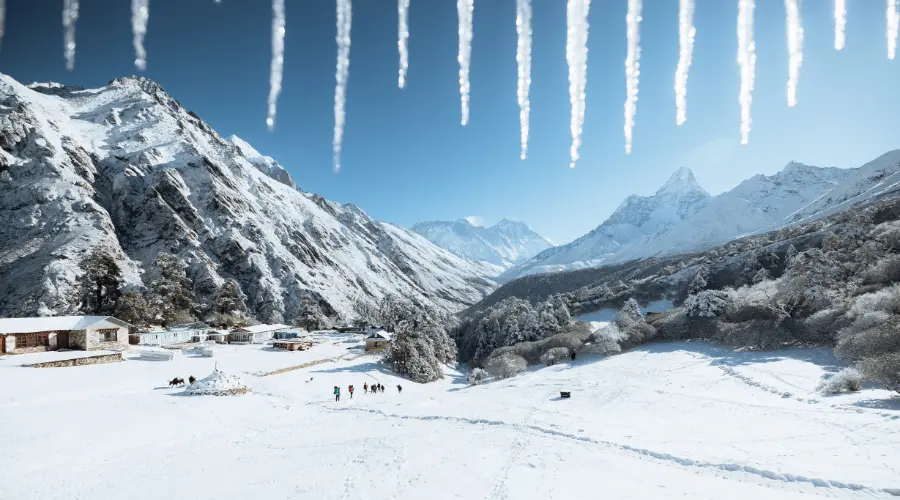
Is Climbing Island Peak during off-seasons possible?
Climbing Island Peak during the off-season, during winter (December to February) and monsoon (June to August), is possible. However, due to unforgiving weather, the difficulty level drastically increases.
The climber will need to carry extra gear and equipment. The trekking trails are also covered with snow, often requiring the ice to be removed from the path. Not to forget, you need to buy an extra pair of winter clothes, increasing the overall cost of your tour.
For these reasons, it is best to attempt Island Peak under a favourable season for a safe and comfortable expedition.
Final Say on Island Peak Preparation
Preparing for Island Peak climbing requires dedication, preparedness, and resilience. By being physically, mentally and technically prepared, this peak can not only be achieved but also be a lifelong happy memory.
Always remember that the journey is as important as the destination. So, try to make the most of each moment of the trip, from starting to prepare for the journey to successfully claiming the summit of Island Peak.
Himalayan Masters is a top-rated trekking agency with a more than 95% success rate. We have earned stellar ratings from TripAdvisor. You can check out feedback from our clients on TripAdvisor.
If you have any queries or anything that we have missed mentioning, please leave a comment or contact us at our email address [email protected]. You can also get in touch with us through WhatsApp at +977 982-3636377.
Want to know more?
Speak to an Expert





Sandip Dhungana
Nepal 🇳🇵
Whatsapp: +977-9823636377

